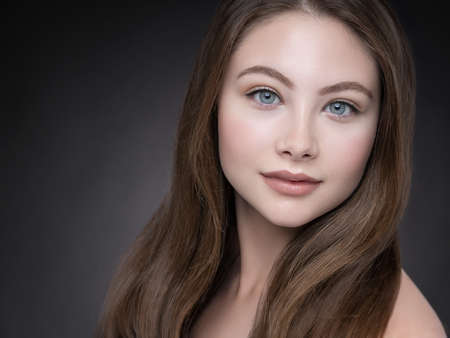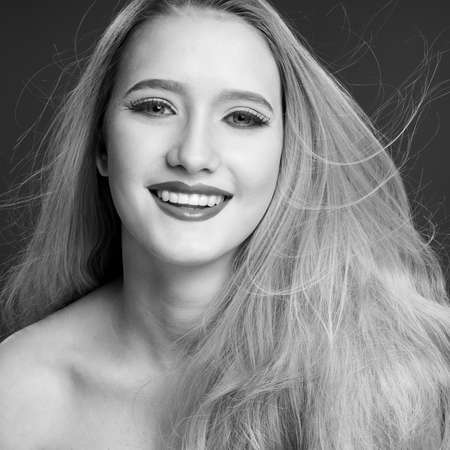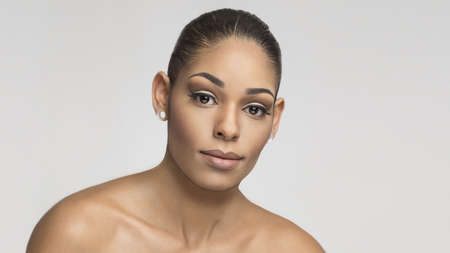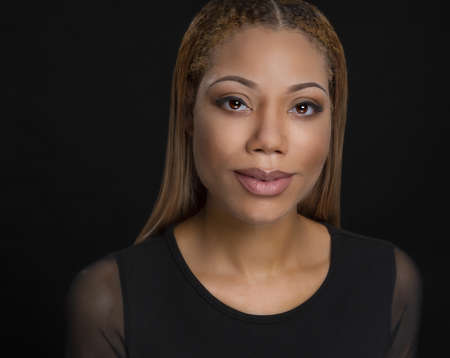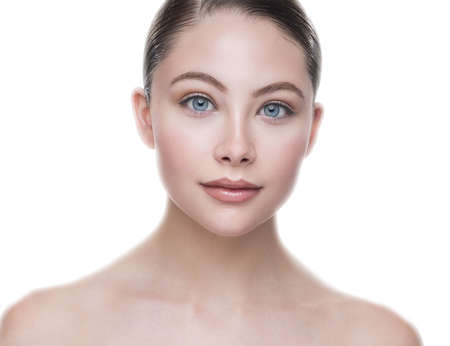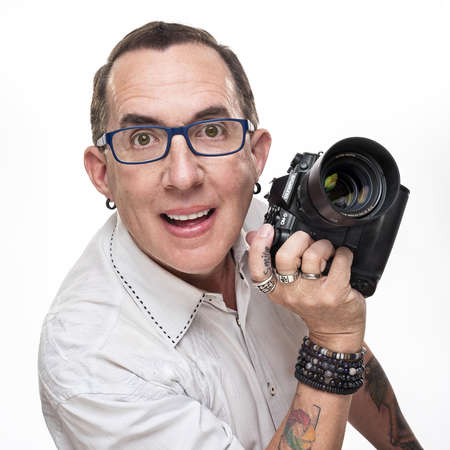I am often asked how I would define a portrait and what makes a good portrait, so I thought I would begin to introduce you to my approach to portrait photography and try to give you all the tools that you need to go out and practice and master the art of portraiture.
The dictionary defines a portrait as a photograph of a person: frequently depicting only the face or head and shoulders. Famed fashion photography icon Richard Avedon declared that "A photographic portrait is a picture of someone who knows he is being photographed.”
While I am no Avedon, I do agree and certainly in the overwhelming majority of my photographs, my subjects know that my camera is aimed at them. While a portrait can also be candid and done without the subject being aware. The tips that I am going to give you involve interacting with your subject to create the final image. It may be in a studio or on location, the style and type of portrait doesn’t matter – these tips will help you up your game.
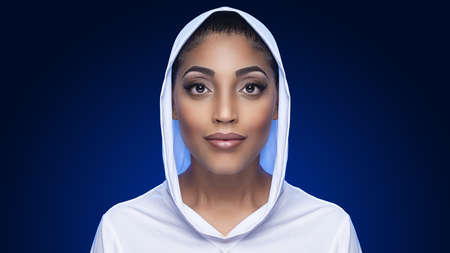
1/250sec – F7.1 – ISO200
Lit with one foreground flash that was modified with a 30” collapsible beauty dish and a white reflector under the subjects face. One flash behind the subject with a blue gel - aimed at a black seamless background and a second flash behind the subject with a blue gel aimed back towards the camera to get the blue glow in the hood.
Why is it so difficult to create a great portrait?
I find that many photographers are intimidated by the idea of being face-to-face with someone, especially a stranger, and then picking up a camera and aiming it directly at the other person. They are even more afraid of not knowing the right things to say to that person to put them at ease or to pose them naturally. So, they seek definitions, a checklist if you will that will allow them to check off the boxes and be able to say they have created a great portrait.
Unfortunately, that method doesn’t create great portraits. Instead it gets us portraits that resemble the ones you had done in grade school. How many of those do you think of fondly?
So, let me begin by pointing out that a great portrait session begins long before you actually pick up your camera.
A LITTLE PLANNING GOES A LONG WAY
A great portrait is a collaboration between a photographer and subject. You can’t expect your subject to know what looks good in a photo and you can’t expect them to know how to look good in a photo. Unfortunately, many of the clothing and makeup choices that me make for our public life do not translate well into photographs. You have to communicate in advance and tell them what to wear and how to prepare.
A few simple tips to start…
- Clothing should be solid colors, no prints, patterns or florals. All of those are distracting and will pull attention away from the face.
- Clothes should fit properly.
- Avoiding trendy clothing styles. Clothing trends will dated a photo very quickly.
- For the absolute best results work with a makeup artist. When someone asks you for a photo of themselves - they aren’t asking for the everyday reality. What they really want is a photo of themselves on a really good day… times 10!
- If you can’t hire a makeup artist, talk to your subject about their makeup application. Avoid dark eye shadows or bright red lips unless you want people to see the makeup before they see your subject.
- If you are going to include hands in any of your photos - fingernails should be clear coat, nude or thin French tipped. Bright colors can clash with the theme of your photo and nail designs are simply distracting.
- Avoid jewelry! It is a major distraction and can date an image as quickly as clothing can. This can be a challenge as some people wear jewelry that is very sentimental to them. If it is a paid job - then the jewelry stays. If not, do everything you can to convince your subject to leave the jewelry at home.
Planning isn’t limited to clothing and makeup. Planning also means decide BEFORE your subject arrives, what kind of lighting you will be using. Set it up and test it so that you know your exposure settings. Decide what your background will be for your first shot and have it set up. If you are shooting on location, the same suggestions apply, select your location, visit it at the time of day that you intend to shoot so that you can see what the lighting looks like. If you can’t visit in advance use an app like LightTrac (http://www.lighttracapp.com) or Sun Surveyor (https://www.sunsurveyor.com) Both are available for iOS and Android and both will allow you to determine the suns location in the sky for any address on any date and time in the future.
All of this planning is what allows you to pick up your camera and give all of your attention to your subject. A good portrait photographer is never head down in their gear while a subject is in front of their camera.
SHOOTING PORTRAITS IS A RELATIONSHIP GAME
A great portrait will cause the viewer to pause and engage. A great portrait makes a connection between the subject and the viewer. This doesn’t happen by chance or luck. This happens by interacting with your subject. But you don’t have to know all of the right things to say or do - that will come with time and practice and just to be clear… there is no standard set of words or phrases that will get you the desired response from every subject - humans are all different and all respond differently.
I FIND THAT PHOTOGRAPHING PEOPLE IS 80% PSYCHOLOGY AND 20% PHOTOGRAPHY
My advice is to remind yourself that the person in front of your camera is a PERSON just like you, they have emotions and feelings and just like you they are probably not overly thrilled about being in front of your camera. If you begin with that awareness, you'll be more inclined to pay better attention to your subject and to talk to them and engage them. This is the easiest and also most crucial technique to keep your subject relaxed.
This is also why it is so important that you understand your camera so that it is an extension of your thought process. When you drive your car - you start the car, but you never stop and think “how do I drive this car?” You have to practice and familiarize yourself with your camera so that you are not thinking about your camera. Start by actually reading the camera manual and not just looking at the photos.
Bottom line is that you don’t have to entertain your subject to make a great portrait. Engage them, show interest in them and treat them the way that you would want to be treated if you were in front of the camera. Make sure you are having fun. Fun is contagious!
Olympus Visionary Joe Edelman is an award-winning photographer and educator. He is well known for his channel on YouTube. With a career spanning more than four decades, his photographs have been published internationally in magazines like Maxim, Cosmopolitan, Get Fit, and Shape. Joe has earned a reputation as a lively and popular instructor at camera clubs, photography conferences and workshops across the country. He lives in Allentown, PA with his wife and their two four legged children.
